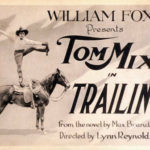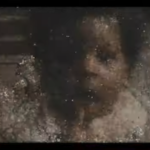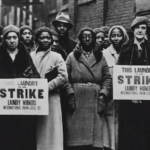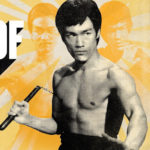Funding for Recordings at Risk
Films of American roots musicians and pioneers of atmospheric research, and as well as home movies about flying, are among many historical records that will be preserved thanks to this year’s Recordings at Risk awards from the Council on Library and Information Resources.
The CLIR is an independent nonprofit organization that supports research, teaching, and learning in collaboration with libraries, cultural institutions, and communities of higher learning. In the seventh of award rounds, it has granted more than $650,000 to 19 preservation projects, bringing the total projects assisted by the fund to 109.
The 90 earlier awards have resulted in digital preservation of more than 17,200 at-risk audio or visual recordings.
The Recordings at Risk grant program is a national program administered by CLIR to support the preservation of rare and unique audio and audiovisual content of high scholarly value. Funded by The Andrew W. Mellon Foundation, by April 2021 the program will have awarded $4.5-million since January 2017 to conserve film content with state-of-the-art technologies provided by digitization service providers.
Some of the selected recordings are audio only, some video.
Audiovisual Collections
Arhoolie Foundation ($49,851)
To preserve the Chris Strachwitz Video Collection, 400 hours of behind-the-scenes videos of leading American roots musicians, filmed between 1987 and 2016 by documentarian Chris Strachwitz. The videos depict treasured regional musicians including Flaco Jimenez, Lydia Mendoza, Fats Domino, Johnny Otis, Ry Cooder, and Rose Maddox. Arhoolie will preserve the films and make them accessible to scholars, musicians, and other interested viewers through online exhibits, public presentations, and educational materials, and at its archive in El Cerrito, California.
California Academy of Sciences ($50,000)
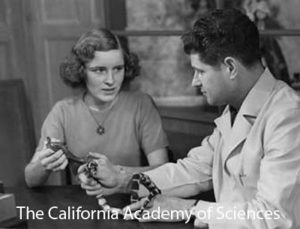 Preserving Academy History through the Digitization of “Science in Action”
Preserving Academy History through the Digitization of “Science in Action”
To digitize 200 film reels from its “Science in Action” collection, a television series that is an important part of Academy history, and to make the films accessible to researchers and the public. The series began in 1950 as a popular 15-minute segment on a popular Bay Area television program, The Del Courtney Show. Academy staffer Tom Groody discussed scientific topics and brought in animals from the Academy’s Steinhart Aquarium. Eventually, Groody’s Science in Action segment became a regular 13-week feature on the program, presenting contemporary science issues.
The Museum of Flight ($25,088)
Aviation through the Ages: Digitizing Home Movies from The Museum of Flight Collections
To digitize 86 home movies in its collections that sample moments in the history of aviation. The Museum will add the digitized files and metadata to its online collections. The films provide, for example, glimpses of famous pilots and military scenes spanning the Golden Age of aviation in the early 20th century to the space age in the 1970s.
University Corporation for Atmospheric Research ($16,922)
Digitizing Decades of Scientific Achievement: At-risk recordings from UCAR and NCAR history
To digitize at-risk films, videos, and recordings that document the early years of studying the global climate through atmospheric and Earth system science research. The materials to be digitized include original observational data films, field experiment documentation, and educational productions that were created as part of the mission of the National Center for Atmospheric Research.
The University of Arizona Libraries Special Collections ($39,175)
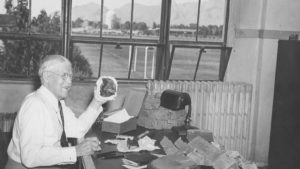
University of Arizona Libraries Special Collections
Preserving the Films of Andrew Ellicott Douglass, Astronomer, Archaeologist, and Father of Tree-Ring Dating
To stabilize, digitize, digitally preserve, and provide public access to 90 films relating to Andrew Ellicott Douglass, a University of Arizona professor and dendrochronology pioneer. An early adopter of amateur moviemaking technology, he recorded his work in astronomy, climate science, and especially the tree-ring record, which illuminated the chronology of ancient human settlement in the Southwestern United States. On 16mm and 35mm film, from the 1920s through the 1950s, he produced film images of ancestral indigenous settlements in the Americas, and documented significant breakthroughs in scientific practices and research. Making the films available will support the University of Arizona’s ongoing prominence in tree-ring research, climate science, planetary science, and astronomy.
University of Washington Libraries, Special Collections ($33,485)
Digitizing the Independent Media Center World Trade Organization Videotape Collection
To digitize, preserve, and make accessible 338 videotapes created by filmmakers and activists during the 1999 protests against the World Trade Organization (WTO) in Seattle. The videotapes from the Independent Media Center collection offer perspectives into a historic moment that brought together grassroots activists, labor leaders, environmentalists, farmers, anarchists, and artists who made history and shaped social justice movements around the world. UW Special Collections will digitize the videotapes and make them accessible for the first time both on-site and online, with detailed descriptions of the contents.
Visual Studies Workshop ($36,950)
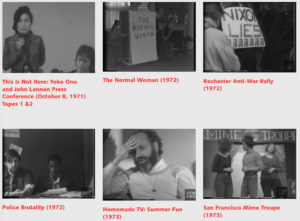 Towards a Democratic Medium: Video Activism and Community Television in the 1970’s – Preserving the Portable Channel Tapes
Towards a Democratic Medium: Video Activism and Community Television in the 1970’s – Preserving the Portable Channel Tapes
To digitize and provide access to 200 decaying half-inch open-reel videotapes produced by a pioneering Rochester, NY media organization that created some of the earliest citizen-made documentary television in the United States. The videos on the Portable Channel tapes are a trove of historical material covering a critical decade in American life. VSW will share the videos and metadata with the public onsite, through VSW’s website, and on VSW’s online collections.
Audio Collections
Several awards in this Recordings at Risk grant cycle went to audio collections.
Massachusetts Institute of Technology ($47,305)
New Music for Computers: Early Recordings from the MIT Experimental Music Studio, 1973-1988
National Baseball Hall of Fame and Museum, Inc. ($13,995)
“The Glory of Their Times” Unedited: Preserving and Digitizing the Larry Ritter Oral History Collection — Ritter drove 75,000 miles to find men who had played professional baseball from the 1880s through the 1950s.
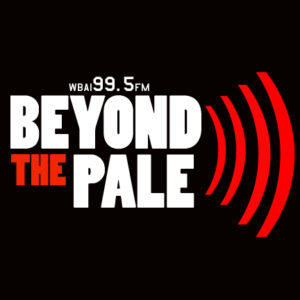 New York University ($37,924)
New York University ($37,924)
Preserving Community Radio, Preserving Community Voices: “Beyond the Pale,” Politics and Culture from the Jewish Left — to make accessible recordings of 727 episodes of the weekly radio program “Beyond the Pale” (1995-2014) that ran on WBAI listener-supported radio.
Ocean Alliance ($36,298)
Preserving the Voices of Whales: Digitizing Global Audio Recordings, 1950s-1990s — 331 magnetic audio reels of whale-song recordings from the 1950s to the 1990s that have helped to drive the save-the-whale movement and broader ecological awareness.
State Archives of North Carolina ($37,039)
Preserving and Providing Access to Legislative History: Senate Audio Digitization
University of Alaska Fairbanks ($34,504)
Digitization and Dissemination of Technically Problematic KUAC-FM Radio (Alaska) Programs (1979-1997), Phase II — to digitize and make accessible more than 150 hours of the nearly 950 tapes from the KUAC-FM Audiotapes Collection at UAF: material from UAF’s relating to Alaska and circumpolar Indigenous issues, land claims, Athabascan ways of life/religion, Native corporations, alcohol issues, language documentation, Eskimo songs and stories, health issues, and the like.
University of Delaware ($15,199)
Hearing Democracy in the First State: Preserving Delaware’s Political Legacy, 1949 – 1986 — with a focus on the William Satterfield collection of Delaware political radio commercials and interviews, documents the political environment in Delaware between 1970 and 1984.
University of Missouri-Kansas City Libraries, Marr Sound Archives ($33,323)
Preserving 1940s Radio Broadcasts on Severely Damaged Lacquer Discs — the Archives includes 62,000 radio broadcasts, many of which are currently being digitized in-house for preservation, but a small portion are lacquer discs of 1940s broadcasts (news, news commentary, radio dramas, orchestral performances…) that are too severely damaged to be digitized with conventional audio equipment so their content will be captured with a non-contact method (the IRENE audio preservation technology, located at the Northeast Document Conservation Center).
Vassar College ($39,986)
Vassar College Archival Recordings Project: Music as Document and Indicator of Social Change — 80 years of collegiate music traditions, oral histories, and intercollegiate and local collaborations between faculty, students, and the surrounding community.
Vermont Jazz Center ($40,889)
The Attila Zoller collection of historical audio recordings 1955-1996: Forty years of performances, currently too fragile to make available,documenting numerous important jazz artists, as well as the development of an innovative jazz guitarist.
Ya-Ka-Ama Indian Education and Development, Inc. ($38,310)
Northern California Tribal Traditions: Education, Culture and Values — to provide digital access to knowledge of historical and cultural content held on obsolete tape media: a chronicling of tribal leadership, practices, events, re-enactments, teachings, and celebrations from the late 70s to early 90s.
YIVO Institute for Jewish Research ($29,992)
The YIVO Yiddish Folksong Project: East European Jewish Folksong in its Social Context — to digitize recordings of 2,000 Yiddish folksongs and oral histories collected by Barbara Kirshenblatt-Gimblett and colleagues from 1973-1975.
More information is available at the program’s Funded Projects page, and also through the CLIR’s podcast, Material Memory. The inaugural season focuses on the preservation of indigenous language recordings and their meaning to the communities that create them.
Previous Post: How Machines Restore Archival Film — or, at least, are trying to
Next Post: Any Day is a Good Day for Smelling Movies

